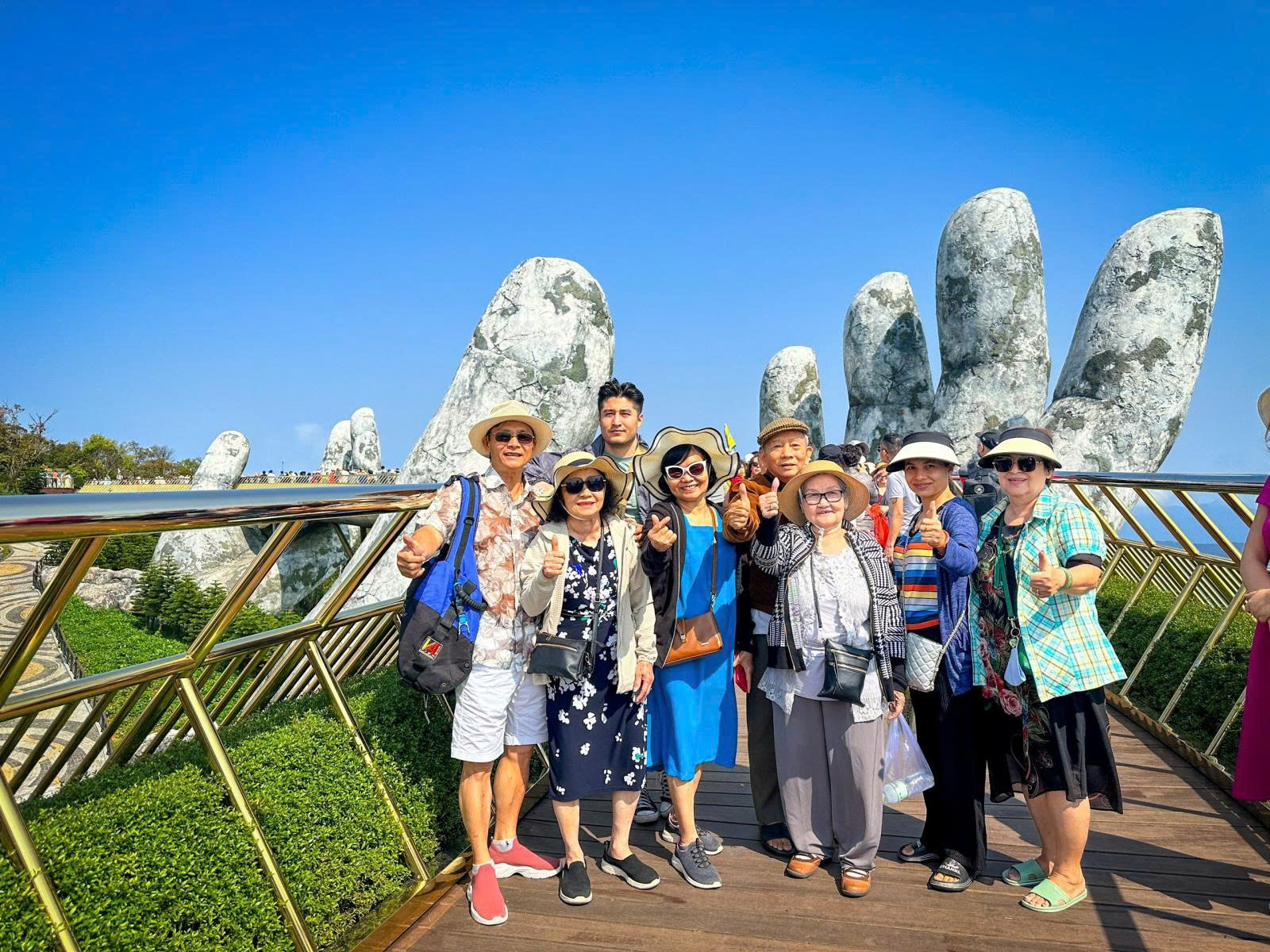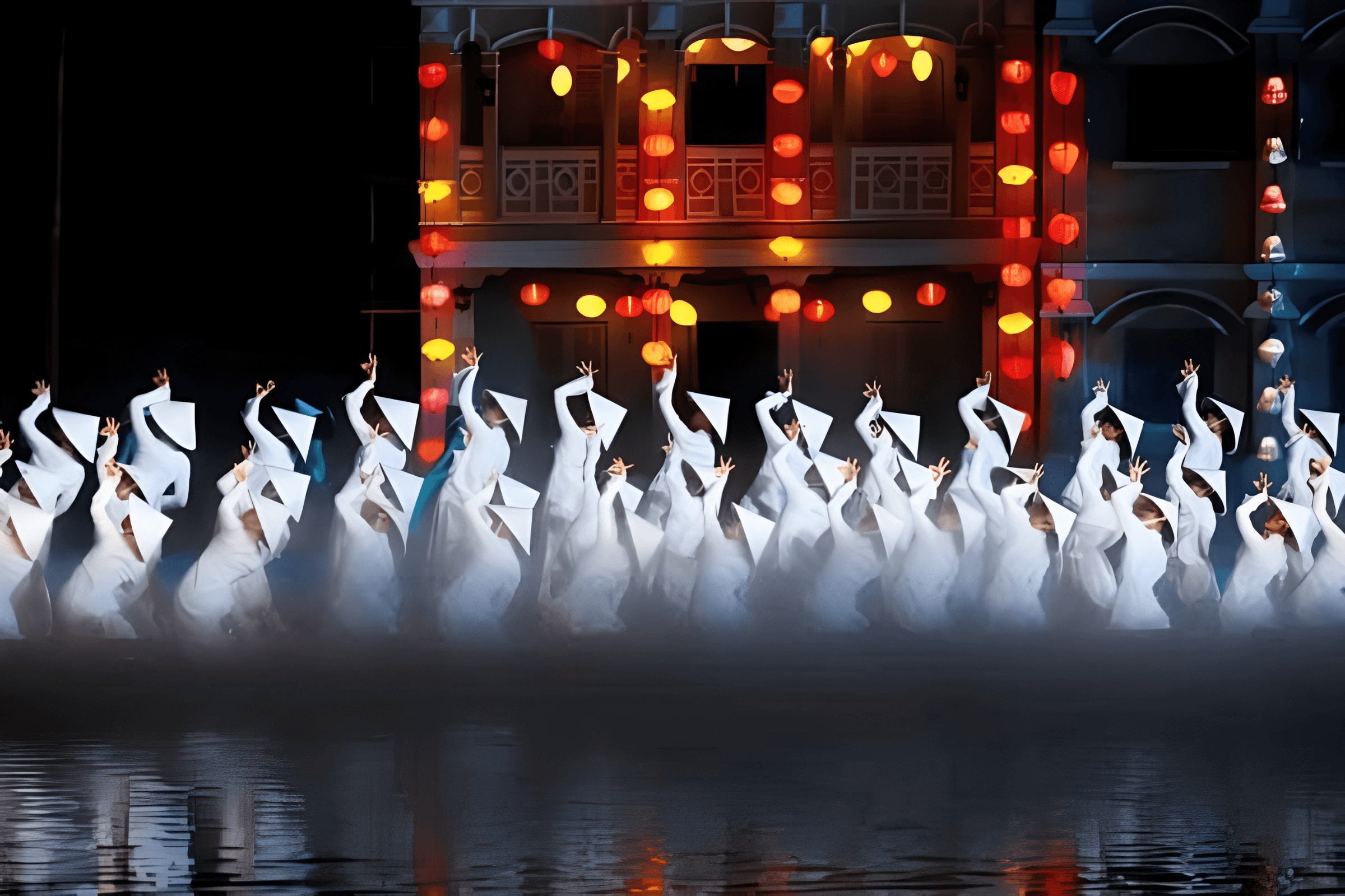Nestled in the heart of Da Nang city, the Cham Sculpture Museum stands as a timeless gateway to the rich cultural heritage of Central Vietnam. Whether you’re a history enthusiast, an art lover, or simply looking for unique things to do in Da Nang, this museum offers a captivating journey through the ancient Champa civilization. Home to the world’s largest collection of Cham artifacts, the museum showcases exquisite sculptures dating back as far as the 7th century—each telling stories of gods, legends, and a once-thriving kingdom. In this guide, you’ll discover everything you need to know before visiting the Cham Sculpture Museum Da Nang: from position, how to get there, highlights and insider tips to make the most of your trip.
Overview of Cham Sculpture Museum
The Cham Sculpture Museum Da Nang, also known as the Cham Museum, is the first museum of its kind in Vietnam dedicated exclusively to preserving and showcasing the cultural heritage of the ancient Champa Kingdom. Established in 1915 by French archaeologists from the École Française d’Extrême-Orient (EFEO), the museum has since become one of the most iconic cultural landmarks in Da Nang.

Cham Sculpture Museum Da Nang
Located just a short walk from the famous Dragon Bridge, the museum is home to the world’s largest collection of Cham artifacts, including over 300 sandstone and terracotta sculptures dating from the 7th to the 15th centuries. These artworks represent a blend of Hinduism and Buddhism, reflecting the spiritual and artistic life of the Champa people.
The architecture of the museum itself is a highlight. Designed in a fusion of French colonial and Cham architectural styles, the building creates a serene and culturally immersive atmosphere for visitors. Inside, the museum is divided into several themed galleries based on the regions where the artifacts were discovered, such as My Son, Tra Kieu, Dong Duong, and more.
Today, the Cham Sculpture Museum serves not only as a place of artistic appreciation but also as a vital link to Vietnam’s rich and diverse historical tapestry. Whether you’re a history buff or a curious traveler, the museum offers a fascinating window into a lost civilization that once thrived along the central coast of Vietnam.

Overview of Cham Sculpture Museum in Da Nang
Location and how to get there?
📍 Where is Cham Sculpture Museum located?
The Cham Sculpture Museum Da Nang is conveniently located in the heart of the city at: 02 2 Thang 9 Street, Hai Chau District.
Nestled near the iconic Dragon Bridge (Cầu Rồng) and the Han River, the museum sits at a prime location that is easy to reach from popular landmarks, the airport, and major hotels. Its central position makes it a perfect stop during a day of sightseeing in Da Nang.
🚗 How to get to Cham Sculpture Museum?
No matter where you’re staying in Da Nang, getting to the Cham Museum is quick and simple. Here are the most common transportation options:
✈️ From Da Nang International Airport (3 km – 10 minutes)

Da Nang International Airport
If you’re arriving from Da Nang International Airport, the fastest and most convenient way to reach the Cham Sculpture Museum is by taxi or Grab. The ride typically takes around 10 minutes, with fares ranging from 70,000 to 100,000 VND (approximately $3–4 USD), depending on traffic and time of day. For travelers seeking more flexibility and a touch of adventure, renting a motorbike is a popular option. You can easily find rental services either at the airport or in the city center, with daily rates between 100,000 and 150,000 VND. From the airport, simply follow Duy Tan Street, cross the Dragon Bridge, and you’ll find the museum located just a few hundred meters away on 2 Thang 9 Street, right in the cultural heart of Da Nang.
🚆 From Da Nang Railway Station (2.5 km – 8 minutes)
If you’re traveling to the Cham Sculpture Museum from Da Nang Railway Station, there are several convenient transportation options available. The quickest and most hassle-free method is by taxi or Grab, with a travel time of approximately 8 to 10 minutes and a fare ranging from 60,000 to 90,000 VND ($2.50–$3.75 USD). Alternatively, budget-conscious travelers can opt for the public bus system. While not the most direct route, buses such as Route 6 and Route R16 offer access to stops within walking distance of the museum. Bus fares are very affordable, costing only 5,000 to 7,000 VND ($0.20–$0.30 USD), making it a suitable option for those wanting to experience local commuting.
🛵 From the City Center / Han Market / My Khe Beach (within 3–5 km)
If you’re staying in Da Nang city center, near Han Market, or along the coastline near My Khe Beach, the Cham Sculpture Museum is only about 3 to 5 kilometers away — making it easily accessible by various means. One of the most enjoyable options is traveling by motorbike or bicycle. You can ride along the scenic Bach Dang or Tran Phu streets, which offer great views of the Han River and local life. Parking is available directly at the museum entrance, making it convenient for riders.
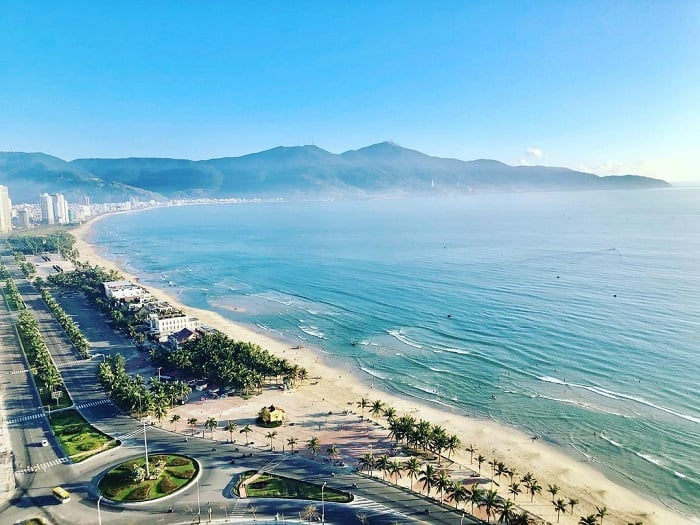
My Khe Beach Da Nang
If you prefer to explore the city on foot, walking is also a great choice. From most central hotels, the museum is just a 15–20 minutes walk, with a safe and pleasant route passing through vibrant city streets, local shops, and parks. It’s a relaxing way to soak in Da Nang’s urban charm before immersing yourself in the ancient Champa culture inside the museum.
Highlights of Cham Sculpture Museum in Da Nang
The Cham Sculpture Museum in Da Nang is not only Vietnam’s premier destination to explore the rich legacy of the ancient Champa Kingdom but also one of the most important museums dedicated to Southeast Asian art. Housing over 300 rare and priceless artifacts, the museum showcases an impressive collection of sculptures, statues, and relics dating from the 7th to the 15th centuries, many of which have been carefully preserved and restored.
A key highlight is the museum’s focus on the artistic and spiritual traditions of the Champa people. Visitors will be captivated by exquisitely detailed sandstone carvings depicting Hindu deities like Shiva, Vishnu, and the Goddess of Grace (Lokesvara), reflecting the profound religious beliefs and mythology of the Champa civilization. These artifacts offer a unique glimpse into the Cham’s blend of Hinduism and indigenous culture, a fusion rarely seen elsewhere.
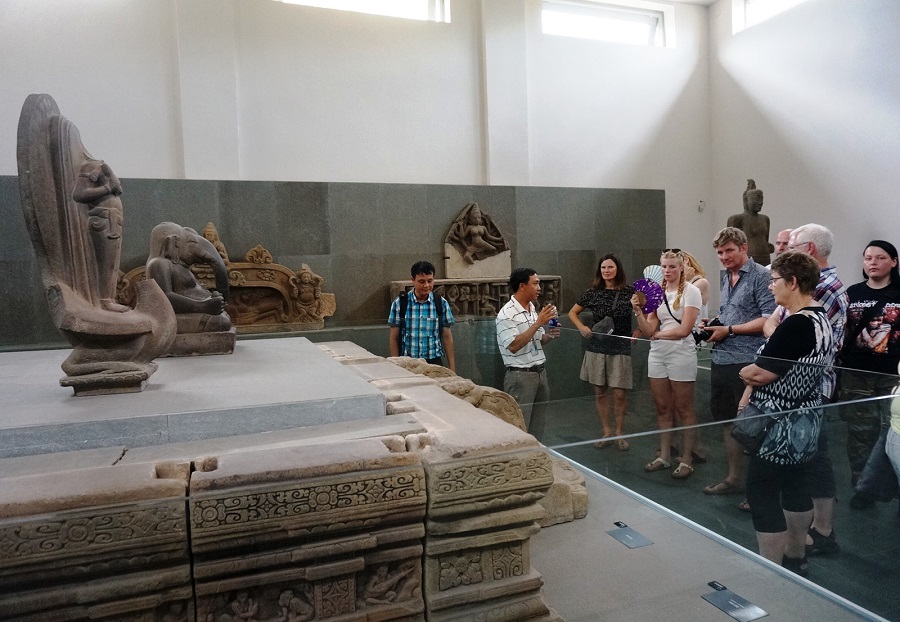
Visitors discover Cham Sculpture Museum in Da Nang
The museum’s architecture itself is a highlight. Designed by renowned architect Ngo Viet Thu, the building beautifully incorporates Cham motifs such as intricate brickwork and lotus patterns, harmonizing traditional Cham architectural elements with a modern, airy layout. This design creates an inviting atmosphere that enhances the viewing experience.
Inside, exhibits are thoughtfully organized by themes — from mythological tales and religious rites to everyday life and royal ceremonies — providing a comprehensive understanding of Cham culture beyond just their art. Detailed descriptions and multimedia guides enrich visitors’ knowledge, making the museum accessible and engaging for all ages and interests.

Cham Sculpture Museum in Da Nang
Don’t miss the life-sized statue of the Goddess of Grace, often considered the masterpiece of Cham sculpture. Its delicate features and serene expression exemplify the high level of craftsmanship achieved by Cham artisans centuries ago.
Whether you are a history lover, art enthusiast, or traveler eager to dive deeper into Vietnam’s cultural roots, the Cham Sculpture Museum Da Nang promises an unforgettable experience that connects the past to the present. It’s truly a cultural treasure that shines a light on a unique chapter of Southeast Asian history.
Nearby attractions to combine with your visit
One of the best things about visiting the Cham Sculpture Museum in Da Nang is its unbeatable location — right in the heart of the city. Surrounded by some of Da Nang’s most famous landmarks, the museum makes a perfect starting point for a half-day or full-day cultural itinerary. Whether you’re looking to stroll along scenic riverside walkways, experience local life at bustling markets, or dive deeper into Vietnam’s fascinating history, there’s something for everyone just a short walk or ride away. Below are three top-rated attractions near the Cham Museum that are easy to include in your trip:
Just a few minutes away, Dragon Bridge is Da Nang’s most iconic landmark. It lights up beautifully at night and offers a fire-and-water show every weekend — perfect for evening visits.
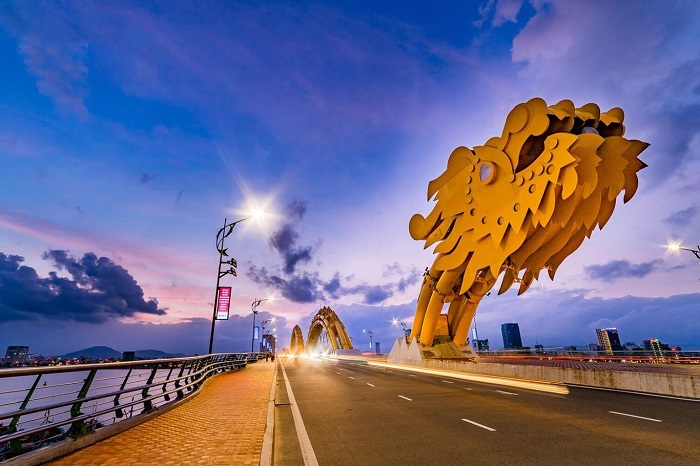
Dragon Bridge, Da Nang
🛍️ Han Market
A must-visit for those who want to dive into local culture. From fresh produce to souvenirs, this bustling market is ideal for shopping and tasting Da Nang’s street food.

Han Market Da Nang
Located about 1.5 km from the Cham Sculpture Museum, Da Nang Museum offers an in-depth look at the city’s rich history, including exhibits on the Vietnam War, local ethnic minorities, and Cham heritage. It’s an excellent complement to your Cham Museum visit if you’re a history or culture enthusiast.
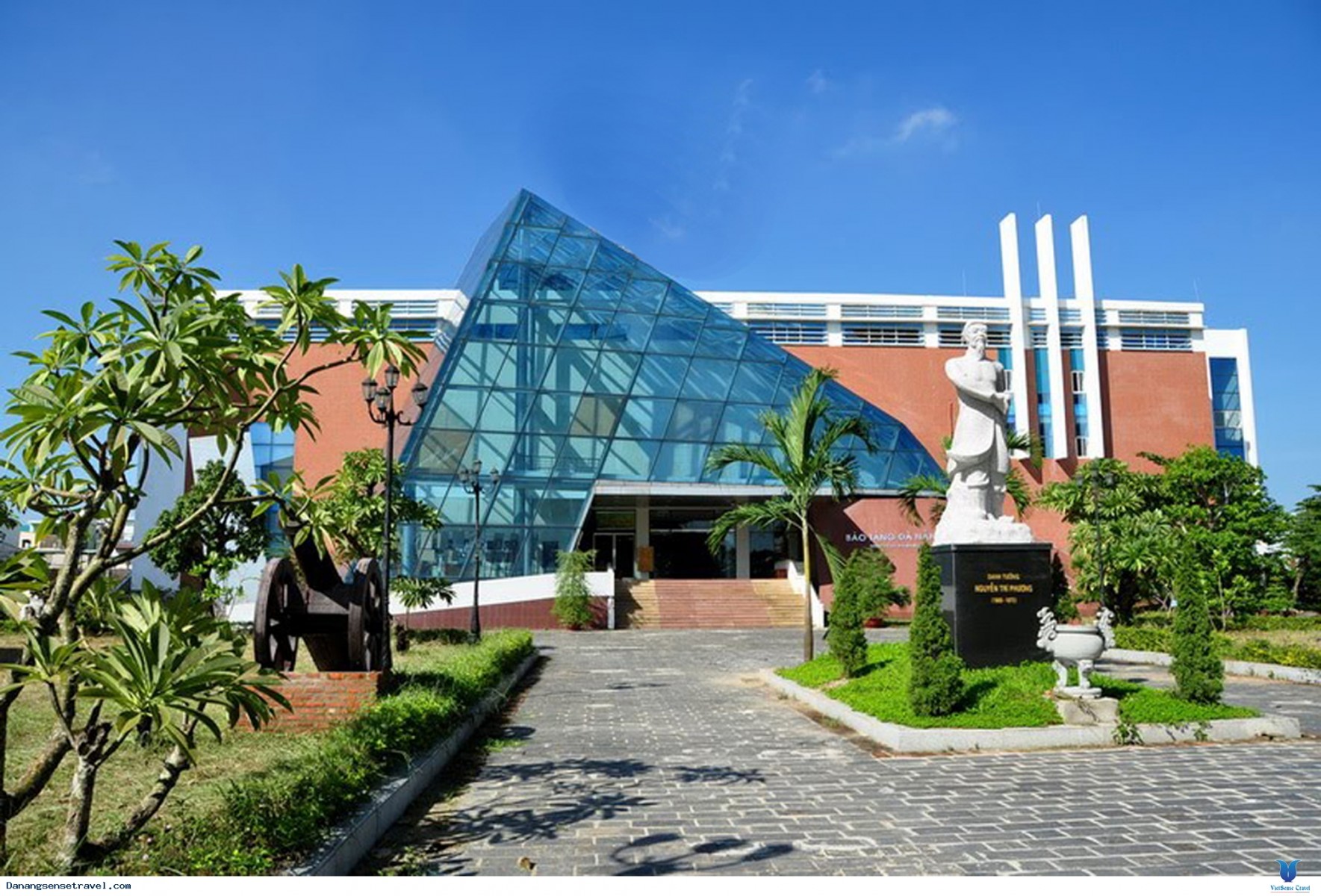
Da Nang Museum
Combining your visit to the Cham Sculpture Museum with these nearby attractions allows you to experience the best of Da Nang’s culture, history, and local life — all within a compact, walkable area. Don’t just stop at the museum; let it be the gateway to discovering even more of what this vibrant city has to offer
Conclusion
The Cham Sculpture Museum in Da Nang is more than just a collection of ancient artifacts — it’s a journey through time, offering a rare glimpse into the spiritual and artistic legacy of the Champa Kingdom. With its central location, affordable entrance, and proximity to many of Da Nang’s top attractions, the museum is a must-see for anyone seeking to experience the cultural depth of Central Vietnam.
Whether you’re a history buff, an art lover, or a curious traveler, setting aside an hour or two to visit the museum can add meaningful depth to your Da Nang itinerary. Combine your visit with nearby sights like Dragon Bridge, Han Market, or the Da Nang Museum for a day full of discovery.
You may also like: Tour in Da Nang



